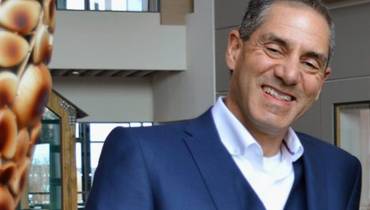3 Plastic Surgery Myths Debunked

Plastic surgery is a special type of surgery whereby parts of the human body are reconstructed, restored, or altered somehow.
Plastic surgery can be divided into two primary categories: reconstructive and cosmetic. Reconstructive surgery aims to repair a damaged or disfigured part of the body to its original appearance and function as possible. On the other hand, cosmetic surgery is recreational because it is based not on necessity or restoration, but rather on personal desire or vanity.
Reconstructive surgery may help restore the appearance of female breasts, for example, that have been subjected to a mastectomy due to breast cancer. In contrast, cosmetic surgery may help a person achieve a particular appearance they may be looking to possess.
Like any medical procedure, many myths and misconceptions about plastic surgery are exacerbated by gossip and media representations. With this information in mind, the following are three plastic surgery myths debunked.
Myth #1: Liposuction Removes All Unwanted Weight
The first plastic surgery myth debunked is that liposuction can enable you to get rid of all your undesired weight. While liposuction, a surgical procedure that uses a suction technique to remove fat from specific areas of the body, can help supplement a weight loss system and a salutary way of life, it is not a cure-all that can conveniently get rid of all undesired weight.
Liposuction is used instead primarily to target particular areas rather than the whole body uniformly at once, reshaping the body part by part instead of acting as a major weight-loss surgical procedure.
Liposuction can typically get rid of ten to twelve pounds at most, making it better for dealing with problem areas like the thighs and so-called love handles in otherwise healthy individuals than, say, helping a patient suffering from morbid obesity.
Myth #2: All Botox Is the Same
The second plastic surgery myth debunked is that every Botox procedure is the same. In reality, many different types of such procedures that are used primarily to reduce the appearance of facial wrinkles require an experienced and qualified plastic surgeon to select for the individual.
The Botox type and the injection amount and skill is of utmost importance for a successful procedure. Each different Botox type has its unique uses, and it will be necessary to do one's research with due diligence to be informed as to which changes are desired and why so.
The plastic surgeon can then be informed of this information to make the best possible choices on your behalf. This can prevent having to come to terms with undesired results for the months ahead.
Myth #3: All Cosmetic Surgeons are Plastic Surgeons
The third and final plastic surgery myth debunked is that all cosmetic surgeons are qualified plastic surgeons. Not only is this myth patently false, but it is also potentially hazardous.
Not every cosmetic surgeon is a qualified plastic surgeon. As a result, due discretion in choosing the right professional to perform the procedure you desire is of utmost importance.
A plastic surgeon will be tasked with procedures that could almost irreversibly alter your body and its outward appearance, not to mention jeopardize your very health. Therefore, the plastic surgeon you choose must perform the procedure the first time successfully.
Ensure that the plastic surgeon you choose is certified by the American Board of Plastic Surgery and performs their surgeries in accredited operating facilities.
Certification by the American Board of Plastic Surgery requires as much as an additional decade of training. Nonetheless, anyone who possesses a valid medical license can technically refer to themselves as plastic surgeons and practice plastic surgery.
So, in choosing the best plastic surgeon for you and the procedure you desire, make sure that they are certified and review their previous experience and work. Being able to offer and provide breast implants, for example, is not quite the same as having ample experience in reconstructive surgery for patients having undergone mastectomies.
In conclusion
Going under the knife under anesthesia for potentially dangerous cosmetic or reconstructive procedures carries inevitable risk. While this risk alone need not completely deter potential patients, as many are performed reliably well, it is vital and abundantly worthwhile to do due research to make sure the professional you enlist is as experienced and qualified as possible based on your desires and concerns.
Once these procedures are done, there is often little to no going back, so finding the right information and someone who does the job correctly is essential.














![9 Tips for Managing Your Online Writing Projects Efficiently [node:titile]](/sites/default/files/styles/video_thumbnail_bottom/public/open-book-laptop-online-writing-tips.jpeg?itok=rI4zR3a-)






